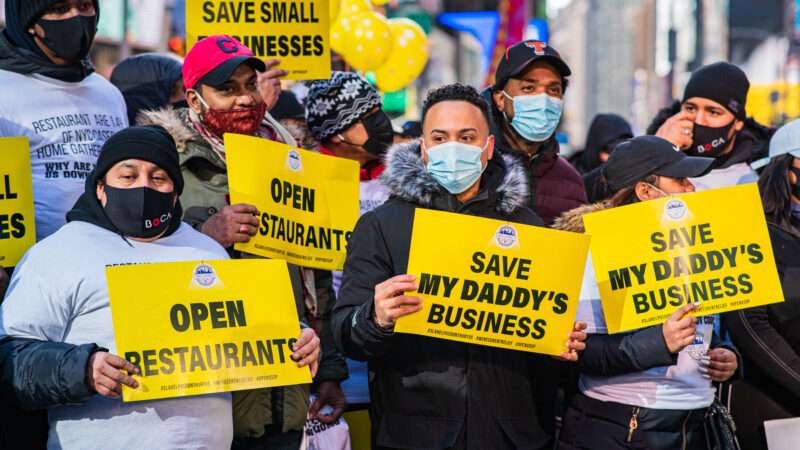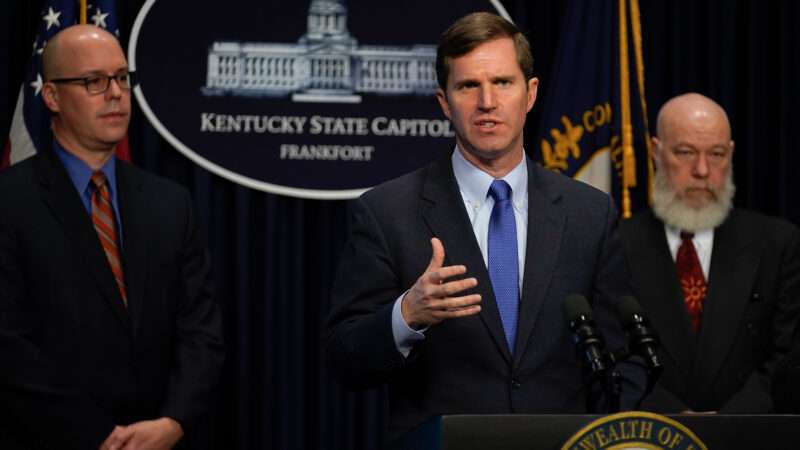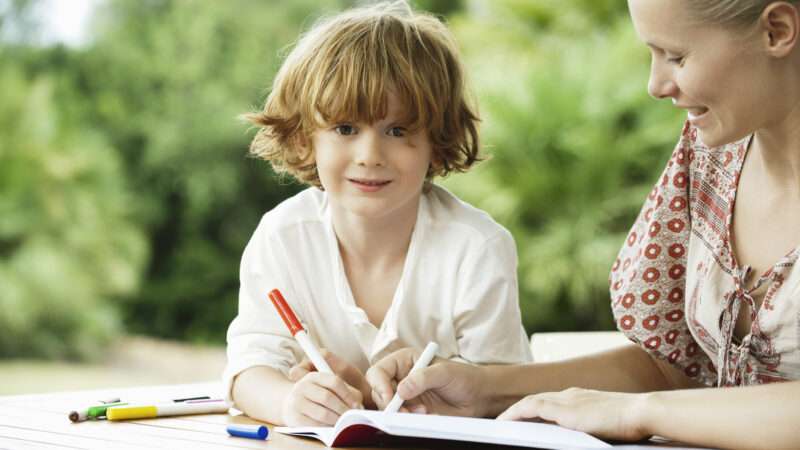Insisting that “the push to reopen schools is rooted in sexism, racism and misogyny,” the Chicago Teachers Union is fighting plans to return children to the city’s public school classrooms. Not only is the union seeking an injunction to keep kids at home, but it says “all options are going to be on the table“—an implied threat of a strike in an already chaotic year—if it’s not happy with the school board’s decision.
Amidst a multitude of such battles across the country, it’s no wonder that families weary of being held hostage to other people’s decisions are abandoning government schools to enroll their kids in private institutions or to teach them at home. That shift is likely to permanently transform education in the United States in a way that lets children experience diverse approaches and viewpoints.
School and union officials in Chicago differ over their reading of public opinion tea leaves. The board points to the 37 percent of students whose families have opted for in-person teaching, while the union flips that around to emphasize that a majority of families want to delay reopening. But both sets of data indicate the same thing: people have different risk tolerances and come to varying conclusions about the right way to educate their children. Uniform, top-down approaches inevitably leave large numbers of them dissatisfied and looking for something that better suits their needs.
With similar battles playing out around the country, many families are heading for the exits. The evidence shows that more children than before the pandemic are learning their lessons from options chosen by their parents and free of the whims of school boards and unions. Public school enrollment is down in California, Colorado, Massachusetts, Maine, Minneapolis, Mississippi, and elsewhere.
“Comprehensive national data aren’t available yet, but reporting by NPR and our member stations, along with media reports from around the country, shows enrollment declines in dozens of school districts across 20 states,” NPR reports.
“The reason is no mystery,” according to The New York Times. “With public schools mostly shifting to remote or hybrid learning, parents are pulling their children out entirely, opting to keep them at home or looking for options that offer more in-person instruction.”
Where are those kids going? Perhaps some are getting lost in the year’s chaos, but it’s obvious that many families have embraced education options both traditional and new.
“More families are choosing to home-school or send their children to private schools,” notes the Lewiston Sun Journal in Maine.
Homeschooling, in particular, is booming. Once regarded as a fringe choice for hippies and religious families, various approaches to DIY education pushed into the mainstream in recent decades and reached critical mass this year. An estimated 3.3 percent of children were homeschooled in 2016, up from 1.7 percent in 1999, according to the National Center for Education Statistics. That share roughly tripled this year to nine percent, in an Education Week survey. Gallup agrees, finding that 10 percent of children are now being homeschooled.
“Home schooling will become more mainstream and socially acceptable, now that so many people are getting experience with schooling their own children from home—whether it’s through traditional home schooling or overseeing their children’s remote schooling,” Christopher Lubienski, a professor of education policy at Indiana University, told Education Week. He predicts that some families will return to public schools after the pandemic passes, but the ranks of homeschoolers will permanently increase.
Many private schools, too, are seeing growth in enrollment. That comes after years of declines because of the Great Recession and the proliferation of charter schools which offer options without charging tuition.
“As the pandemic drags on through the fall, more families are seeking out schools that are fully in-person rather than remote — and, for many, that means switching to an independent institution, despite the cost,” CNBC reported last month.
“In a survey of 160 independent schools over 15 states and the District of Columbia, almost half of schools (78) surveyed report they have experienced higher enrollment in the current school year, relative to the prior year,” according to Damian Kavanagh, president of the Mid-South Independent School Business Officers association and Ben Scafidi, the director of the Education Economics Center at Kennesaw State University. “Forty-eight schools experienced a decrease in enrollment, while the remaining 34 schools had enrollments ‘stay about the same.’ Of schools where enrollment essentially was unchanged, the reason that enrollment did not increase at 14 of them was because they were at capacity.”
That means that, even as the economy is slammed by pandemic lockdowns and people idled from work in a way that usually decimates private school enrollment, more Americans are digging into their pockets to pay for their kids’ education.
Kavanaugh and Scafidi emphasize that independent schools offer “diversity of educational, religious and social offerings in K-12 education.” The same can certainly be said of families that tailor their homeschooling approaches according to their own values and their children’s needs rather than school board policies.
Perhaps nowhere is this more important than in the range of ideas with which students are presented, and the interpretations that teachers offer to students.
“American history textbooks can differ across the country, in ways that are shaded by partisan politics,” Dana Goldstein of The New York Times marveled last January, in a stark summary of the country’s curriculum wars. She contrasted different editions of the same textbooks prepared for public schools in California and Texas and found that “classroom materials are not only shaded by politics, but are also helping to shape a generation of future voters.”
Deliberately or incidentally, families are leaving those politicized lessons behind as they abandon unsatisfactory institutions that have been paralyzed by pandemic-era battles between school boards and unions. The world they’re creating is bound to be more diverse in terms of its ideas and approaches even as it’s better suited to the needs of parents and children.

from Latest – Reason.com https://ift.tt/3aoXXRS
via IFTTT



